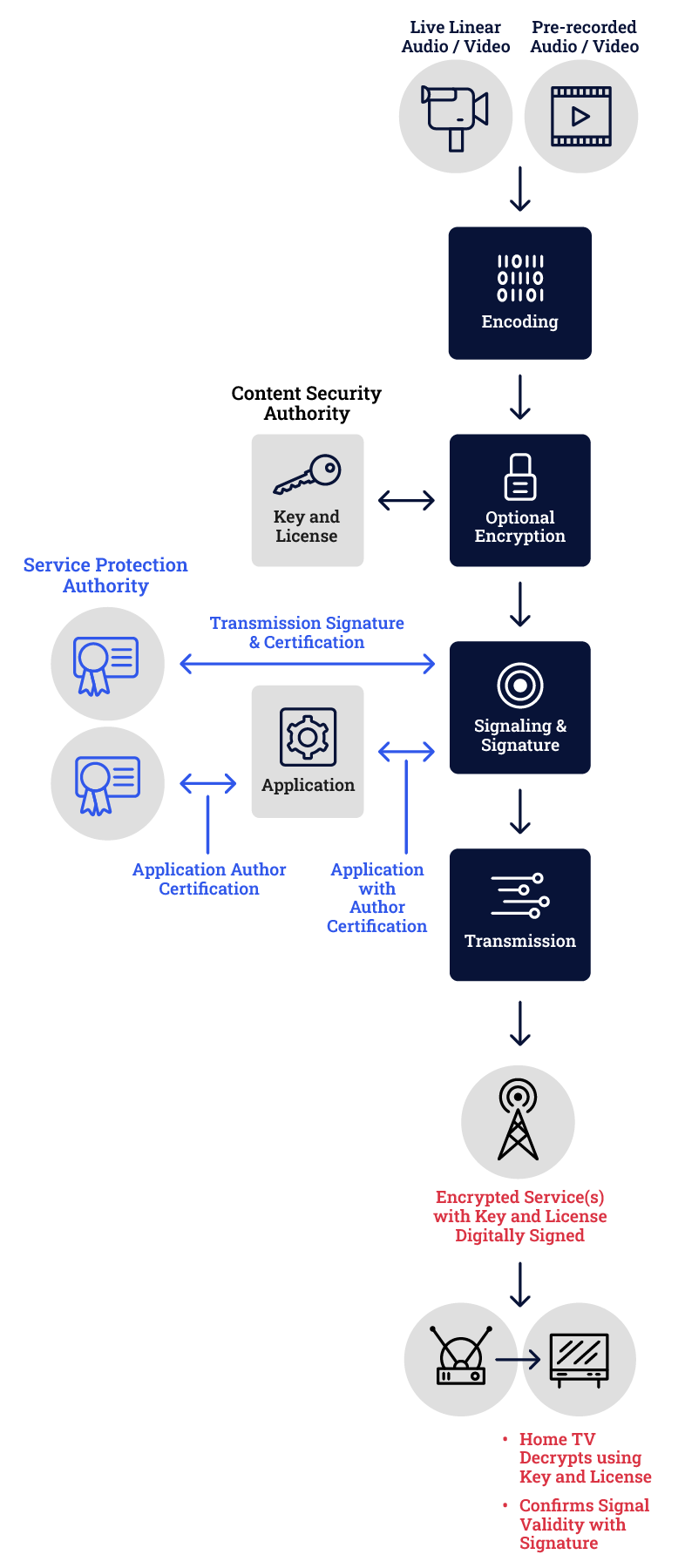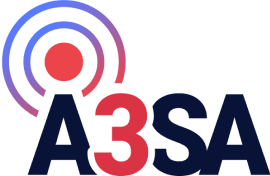
ATSC 3.0 Security Standard
The most up-to-date standard for content providers
ATSC 3.0 Security
The ATSC 3.0 broadcast standard offers content protection features not available with the original (ATSC 1.0) broadcast television transmission standard.
A3SA’s Role in Security
The ATSC 3.0 standard ensures that all broadcaster signaling sent to the viewer’s receiver is “signed” (i.e., certified as authentic). This “signature” uses advanced cryptographic technology and is a secure way for the broadcaster to identify and certify the service and attendant signaling tables to be true and authentic.
If the broadcaster chooses to include an attendant application (such as a station- or network-based app), it can include in the transmission an additional digital signature to provide to the viewer’s receiver evidence that the application is indeed authentic and has not been hacked. This feature is especially important to consumers who choose to register their personal details with a related application.

Security Protocols
The ATSC 3.0 standard also allows broadcasters to use content protection to secure the media content. To be effective, this content protection must use secure cryptographic methodologies with a secure “key” only available to the broadcaster’s licensed protection equipment and the viewer’s separately licensed receiver. Many widely used systems, such as YouTube, Peacock, Tubi, Pluto TV, Xumo, and IMDb TV, offer secure content, enabling consumers to view it without paying a subscription fee. Secure versions of NEXTGEN TV will take this same approach.


ATSC 3.0 Features
The features of ATSC 3.0 that enable broadcasters to protect the integrity of their signal include:
Service Protection
Prevention of attacks is accomplished by verifying the source of the content with certified and secure signatures. Receivers can verify that the OTA signals and applications are authentic and have not been altered, manipulated, or interfered with before being delivered to the viewer’s receiver. This feature is mandatory in the ATSC 3.0 standard.
Content Security
Content theft (or piracy) is best deterred by robust protection and associated license compliance rules. Verified receivers can easily display protected content but unauthorized redistribution can be interrupted through the use of voluntary content protection.
